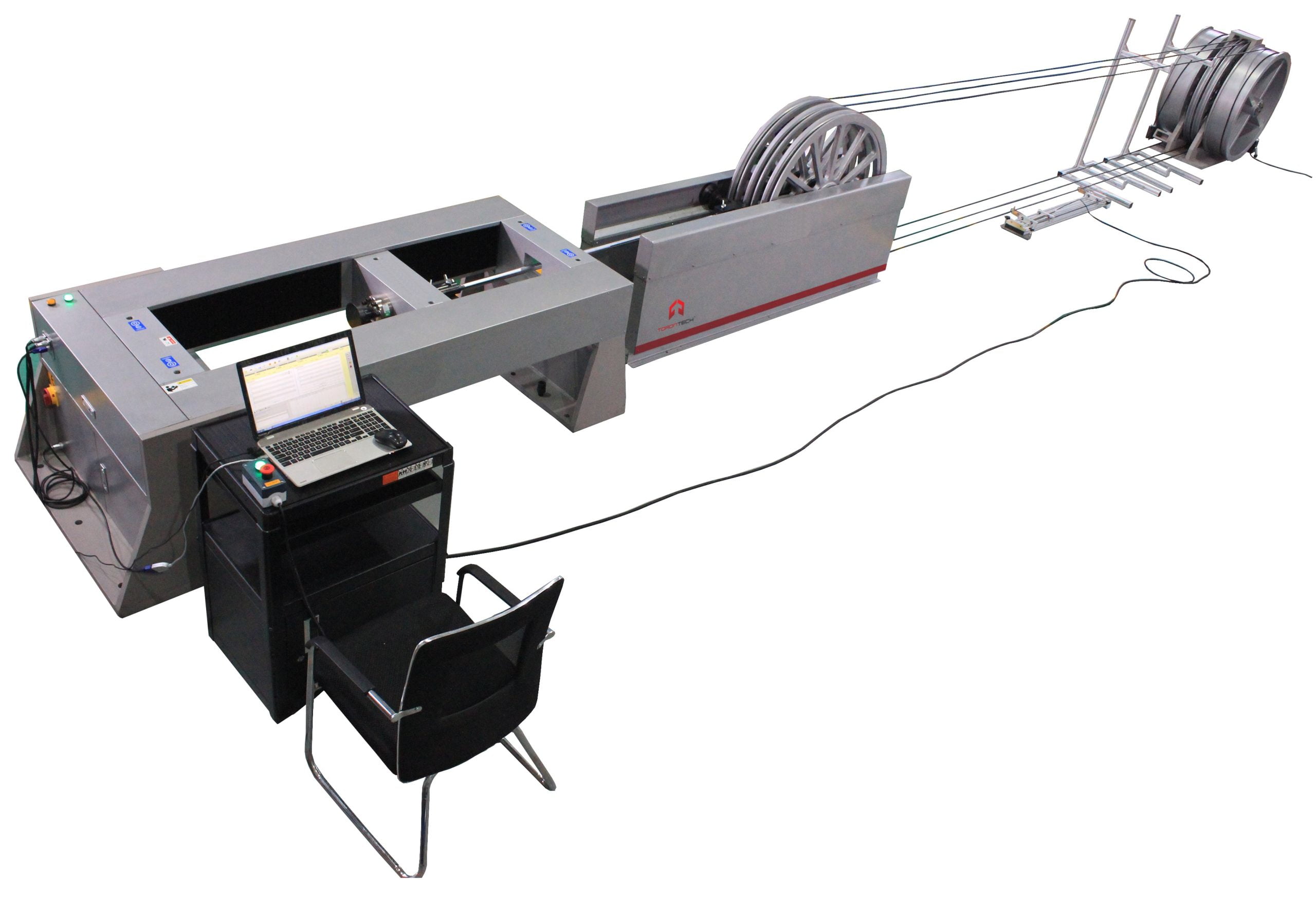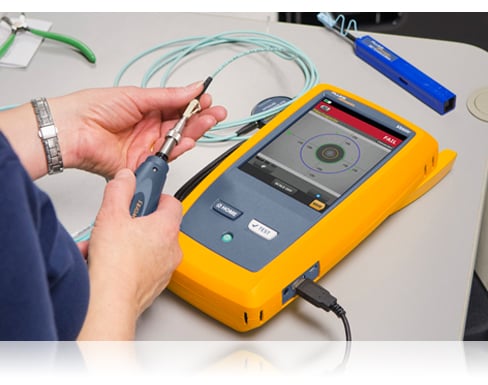Discovering the Effect of Robotic Vision on Modern Manufacturing Techniques and Top Quality Control
Robotic vision modern technology is changing the landscape of modern manufacturing and high quality control. By integrating innovative imaging systems and expert system, makers can attain extraordinary levels of precision and effectiveness. This shift not just optimizes production processes yet likewise addresses essential difficulties in keeping item requirements. As markets significantly rely upon these advancements, the effects for future production methods stay to be totally checked out. What will this indicate for the competitive dynamics of the marketplace?
Recognizing Robotic Vision Modern Technology
Robotic vision modern technology functions as the backbone of automation in modern manufacturing. It encompasses the usage of electronic cameras, sensing units, and artificial knowledge to allow robots to translate and reply to visual details from their environment. This modern technology permits robots to identify, situate, and assess objects, making them with the ability of carrying out intricate tasks such as setting up, examination, and product handling with precision. The assimilation of maker discovering formulas better boosts the capability of robotic vision systems, enabling them to adjust to varying conditions and boost gradually. By refining images and data in real-time, robotic vision systems can promote quicker decision-making and reduce errors in producing procedures (fibre testing equipment). This modern technology not only improves functional effectiveness yet likewise guarantees that top quality standards are satisfied regularly. As the production landscape remains to evolve, recognizing the ins and outs of robotic vision technology becomes necessary for leveraging its possible fully
Advantages of Robotic Vision in Production
Robotic vision modern technology provides considerable benefits in production by boosting precision and accuracy in tasks such as top quality control and setting up. This enhanced degree of information assurances that products satisfy strict requirements, reducing waste and rework. In addition, the combination of robot vision can lead to enhanced manufacturing performance, allowing suppliers to maximize their processes and accomplish greater outcome rates.
Improved Precision and Accuracy
In modern-day production, enhanced precision and accuracy are crucial for enhancing production processes and making certain product high quality. Robotic vision systems make it possible for makers to perform complicated tasks with exceptional consistency. These systems use advanced imaging technologies to identify minute information and variations in products, elements, and finished products. By evaluating visual information in real-time, robotic vision considerably reduces human error, resulting in less issues and better criteria. Additionally, boosted accuracy in dimensions and positioning facilitates better positioning in setting up processes, which is necessary for elaborate layouts. Eventually, the assimilation of robotic vision not just reinforces the reliability of making results but additionally promotes self-confidence among consumers regarding product honesty and performance. This precision is essential in markets where quality is paramount.
Enhanced Manufacturing Efficiency

Manufacturers are progressively transforming to vision systems to increase production performance across various processes. These sophisticated systems enable real-time assessment and surveillance, significantly minimizing downtime triggered by errors or problems. By integrating robotic vision, firms can automate quality assurance, allowing for faster recognition of issues and lessening the need for human treatment. This leads to structured operations, as robotics can quickly adapt to modifications in manufacturing needs without sacrificing accuracy. Furthermore, vision systems assist in much better supply administration by accurately tracking elements and items, making certain ideal resource usage. Inevitably, the fostering of robotic vision not only improves performance yet also contributes to higher outcome rates, lowered functional prices, and boosted overall efficiency in the manufacturing industry.
Enhancing Quality Assurance Processes
Robotic vision technology significantly enhances quality assurance processes in manufacturing by utilizing accuracy evaluation methods. These sophisticated systems help with real-time problem discovery, making certain that items meet rigid top quality criteria. Therefore, manufacturers can decrease waste and enhance overall performance.
Precision Assessment Techniques
Accuracy assessment strategies have changed top quality control processes in manufacturing, enabling the discovery of min defects that conventional methods could overlook. These strategies utilize progressed imaging innovations, such as high-resolution video cameras and laser scanning, to attain unmatched accuracy. By making use of robotic vision systems, producers can automate evaluation jobs, guaranteeing constant efficiency and lowering human mistake. click now The assimilation of machine discovering formulas furthermore boosts these systems, allowing them to adapt and boost in time. On top of that, accuracy evaluation helps with the recognition of subtle variations in product measurements and surface coatings, which can considerably affect total product quality. As an outcome, suppliers can carry out corrective activities more swiftly, inevitably bring about lowered waste and enhanced client fulfillment.
Real-Time Defect Discovery
Taking advantage of advanced imaging technologies, real-time issue detection changes quality assurance procedures in manufacturing. By integrating high-resolution electronic cameras and sophisticated formulas, manufacturers can promptly determine abnormalities throughout production. This technology assists in instant restorative activities, reducing waste and boosting total effectiveness. Real-time systems examine items as they relocate along the assembly line, guaranteeing that defects are found and resolved immediately production schedules. Additionally, the implementation of equipment learning boosts the precision of these systems, enabling them to adapt to new flaw patterns with time. Manufacturers benefit from improved item high quality and minimized functional prices. Eventually, real-time defect discovery not just improves procedures however also fosters a culture of continuous renovation in modern-day manufacturing settings.
Real-Time Information Evaluation and Choice Making
In the vibrant landscape of manufacturing, real-time information evaluation empowers systems to make swift, informed decisions. By leveraging innovative robot vision technologies, producers can gather and refine huge quantities of data immediately. These systems evaluate aesthetic inputs to check production processes, ensuring that any kind of variances from top quality standards are identified and addressed immediately. Makers can maximize procedures by reallocating resources and adjusting process based on real-time insights.
The assimilation of information analytics permits for anticipating upkeep, where prospective equipment failings are expected prior to they disrupt manufacturing. This aggressive technique decreases downtime and improves total effectiveness. optical fibre diameter analyser. The capability to make data-driven decisions in genuine time significantly reduces waste and boosts item quality, allowing suppliers to reply to market needs quickly. Therefore, real-time data evaluation not only improves production but likewise cultivates a society of continual renovation in modern production settings
Difficulties in Carrying Out Robotic Vision Solutions
Executing robotic vision systems in manufacturing provides a range of obstacles that can prevent their performance. One significant challenge is the intricacy of incorporating these systems with existing equipment and workflows. Suppliers frequently deal with compatibility concerns with legacy tools, resulting in increased costs and downtime. Additionally, the variability in product forms, dimensions, and materials can complicate the calibration of vision systems, demanding considerable training and fine-tuning.
An additional challenge depends on refining huge quantities of aesthetic data in actual time. High-performance computer sources are crucial, which may need more financial investment in framework. Furthermore, there is a scarcity of experienced employees with the ability of managing and maintaining these sophisticated systems, resulting Web Site in prospective functional inefficiencies. Ensuring the reliability and accuracy of robotic vision systems under varying ecological conditions presents a continuous difficulty. Dealing with these issues is essential for making best use of the prospective advantages of robot vision in production.
Future Fads in Robotic Vision for Production
As improvements in man-made intelligence and equipment discovering remain to advance, the future of robot vision in production appears significantly appealing. Arising fads indicate a shift in the direction of a lot more sophisticated imaging modern technologies, such as 3D vision systems and hyperspectral imaging, which will boost accuracy in quality assurance procedures. Integration with the Net of Things (IoT) will certainly enable Go Here real-time data analysis, allowing robotic systems to adjust rapidly to adjustments in the production environment. The growth of collaborative robots (cobots) equipped with innovative vision abilities is anticipated to facilitate seamless human-robot communications, enhancing effectiveness and safety and security on the manufacturing facility flooring. Additionally, the consolidation of edge computer will encourage robotic vision systems to process data in your area, minimizing latency and allowing faster decision-making. These technologies will not only enhance making procedures yet also substantially enhance product top quality, placing robot vision as a keystone of future commercial procedures.
Frequently Asked Questions
How Much Does Robotic Vision Technology Normally Price?
Robotic vision technology normally costs in between $10,000 and $100,000, depending upon the intricacy and specifications. Factors influencing price consist of sensing unit top quality, software abilities, and assimilation demands, making it vital to evaluate certain task requirements.
What Industries Are Many Influenced by Robotic Vision Innovations?
Robotic vision developments considerably effect industries such as production, vehicle, electronic devices, and food processing - optical fibre diameter analyser. These markets take advantage of improved automation, boosted high quality control, and increased effectiveness, leading to streamlined operations and decreased labor costs
Can Robotic Vision Solutions Be Integrated With Existing Equipment?
Robotic vision systems can certainly be incorporated with existing machinery. This integration improves operational effectiveness, enabling manufacturers to utilize progressed innovations without the requirement for total overhauls, consequently enhancing production processes and keeping quality requirements.

What Abilities Are Called For to Run Robotic Vision Equipments?
Running robot vision systems necessitates efficiency in shows, an understanding of artificial intelligence, expertise of picture handling methods, and the capacity to fix software and hardware issues, making sure seamless assimilation and optimal performance within manufacturing settings.
Are There Any Security Interest In Robotic Vision in Production?
